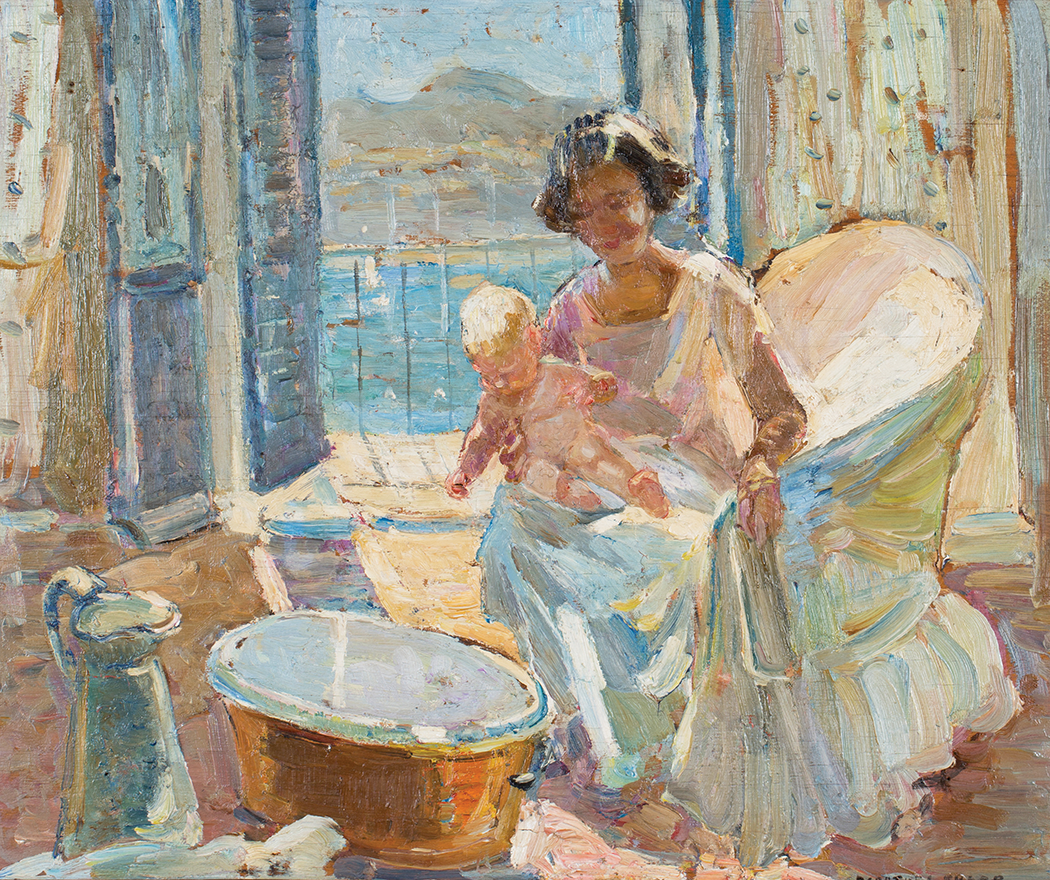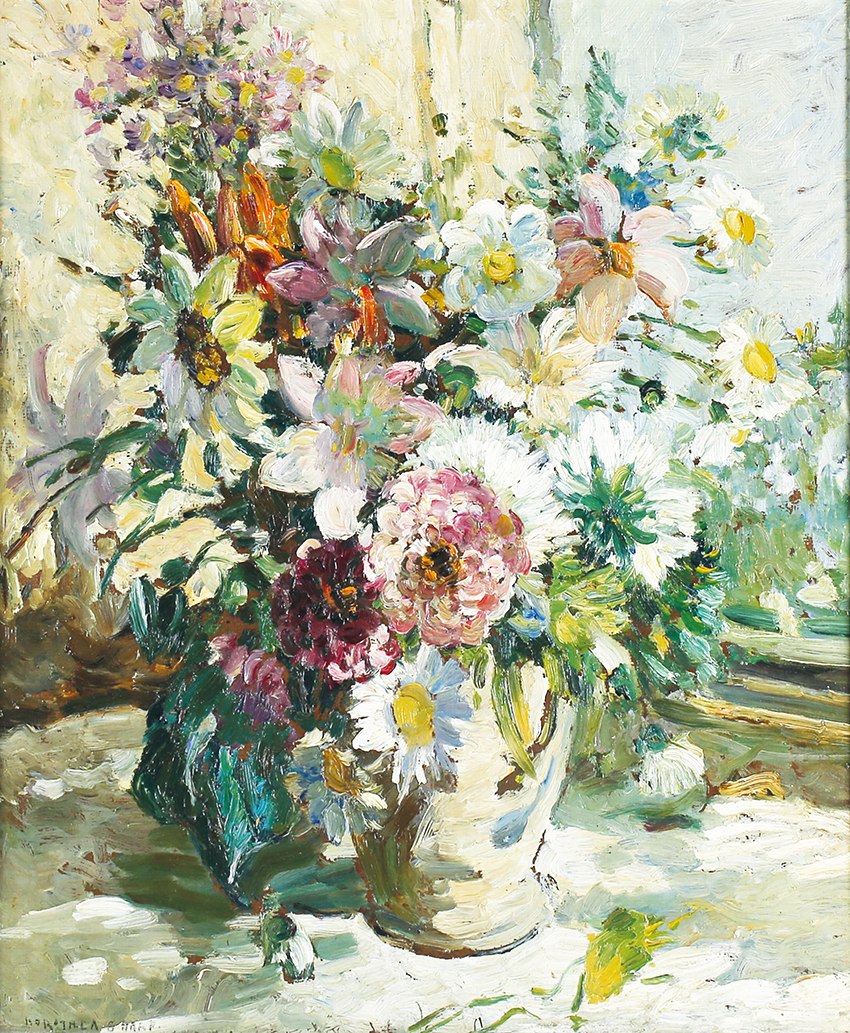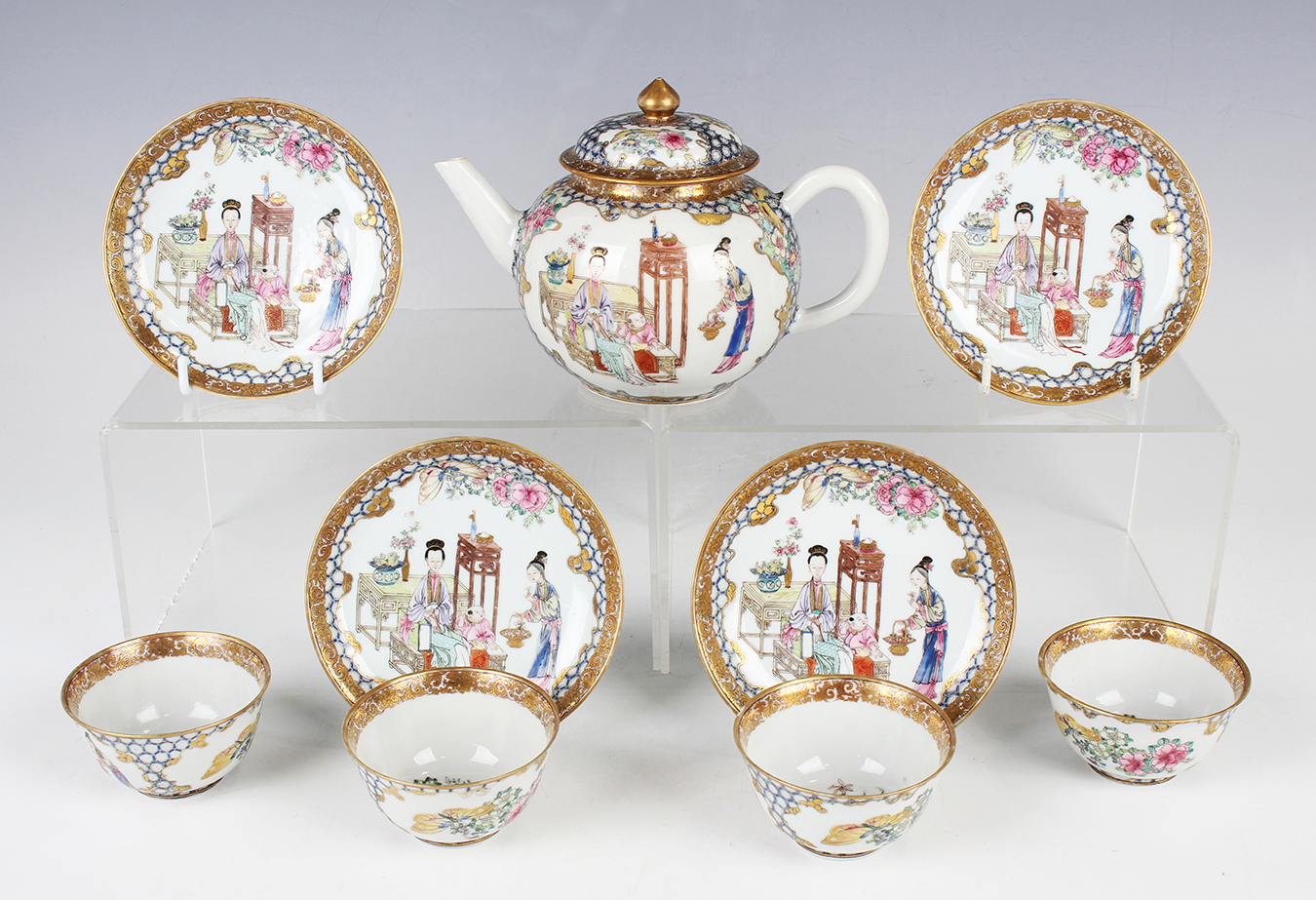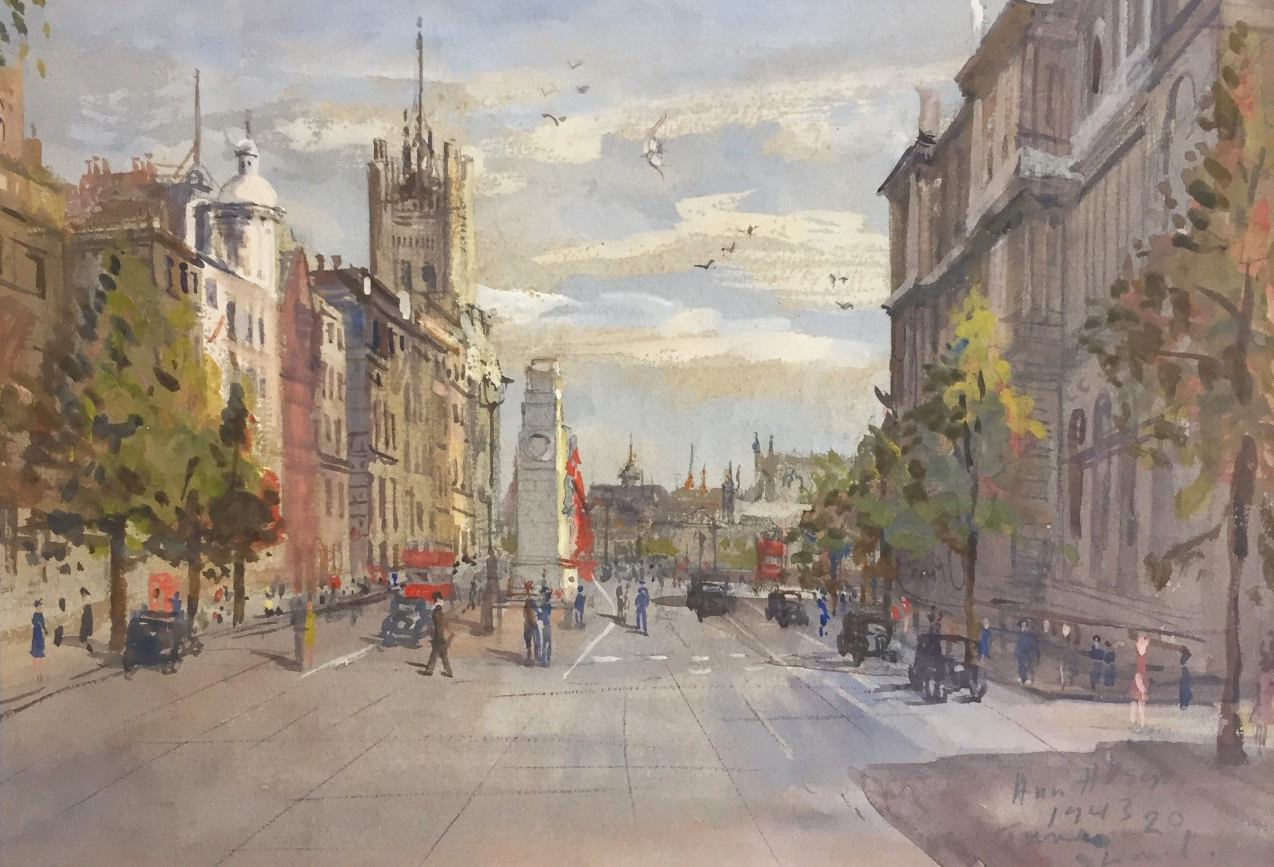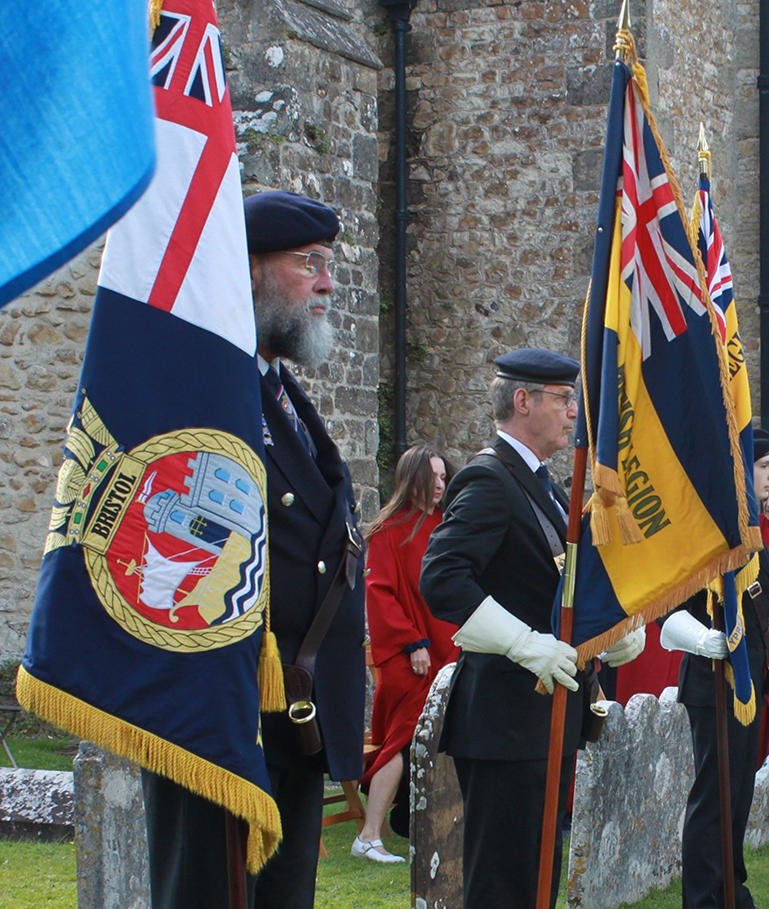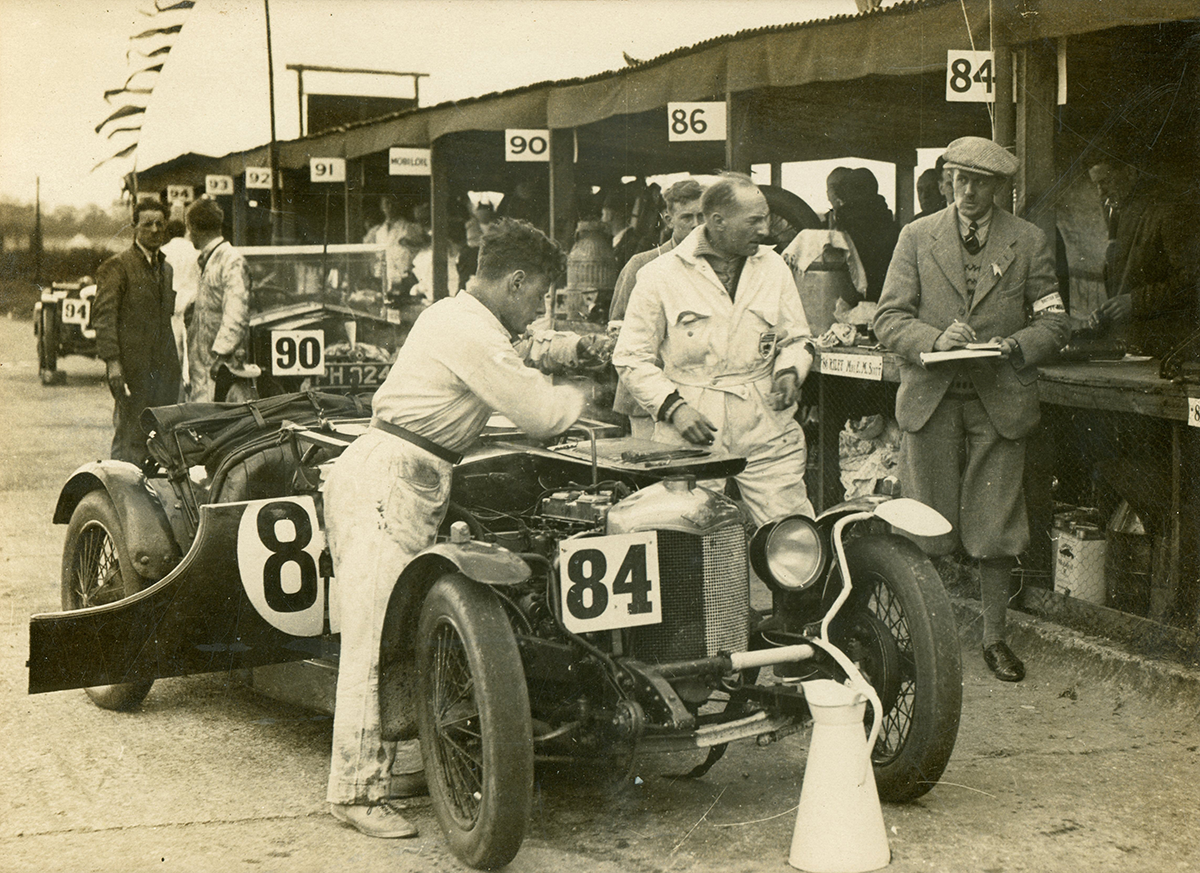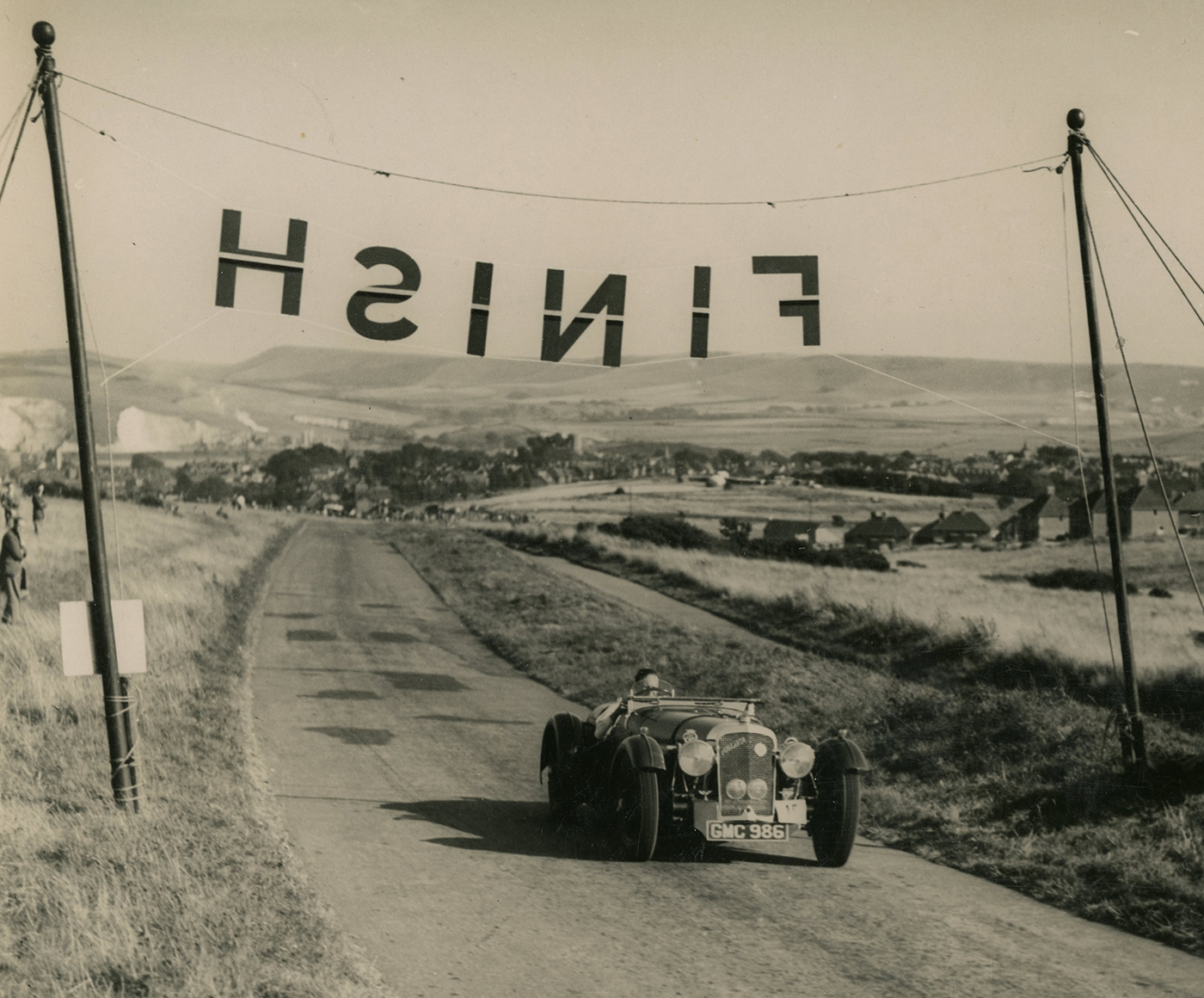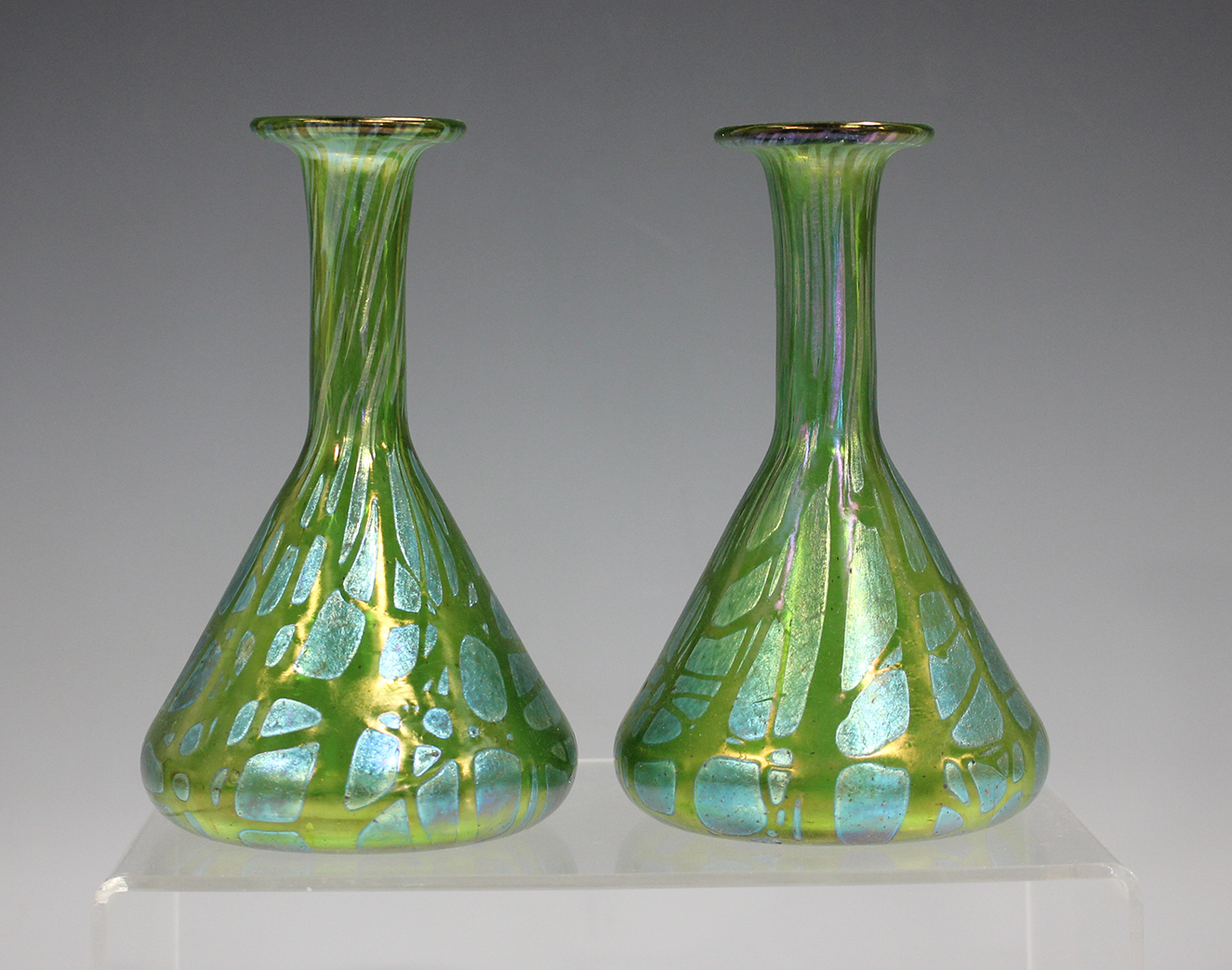
A fine collection of Loetz glassware from the collection of the connoisseurs and glass dealers, John and Poppy Stallebrass, is to sold in Toovey’s specialist auction of glass on Wednesday 6th December 2023.
In the early 20th century Art Nouveau became highly fashionable amongst glass makers and designers including the German manufacturer Loetz.
It was the great American innovator and glass designer Louis Comfort Tiffany who first gave expression to Art Nouveau in iridescent glass. His work would be widely copied in America and Europe.
Demand for iridescent glass was particularly high in Germany and Loetz called some of its early iridescent ware ‘gläser à la Tiffany’. Max Ritter von Spaun headed Loetz during the Art Nouveau period, The grandson of the company founder Johann Loetz, von Spaun became artistic director in 1879. Whilst he acknowledged his debt to Tiffany his approach differed as he sought to produce artistic pieces which were affordable to all.
All Loetz glass is of the highest quality despite being produced in relatively high quantities. Its decoration is rarely representational depending instead on complex technical formulas to create the abstract designs. Wonderful colour combinations with intense blues and greens are heightened with silver and gold iridescence as can be seen in the pair of small green Loetz Crete Pampas design vases of conical form which are estimated at £250-350. Just 14.5cm high their decoration is extraordinary. The Pampas is a common Loetz design. The name probably derives from pampas grass from the sweet grass family Poaceae.
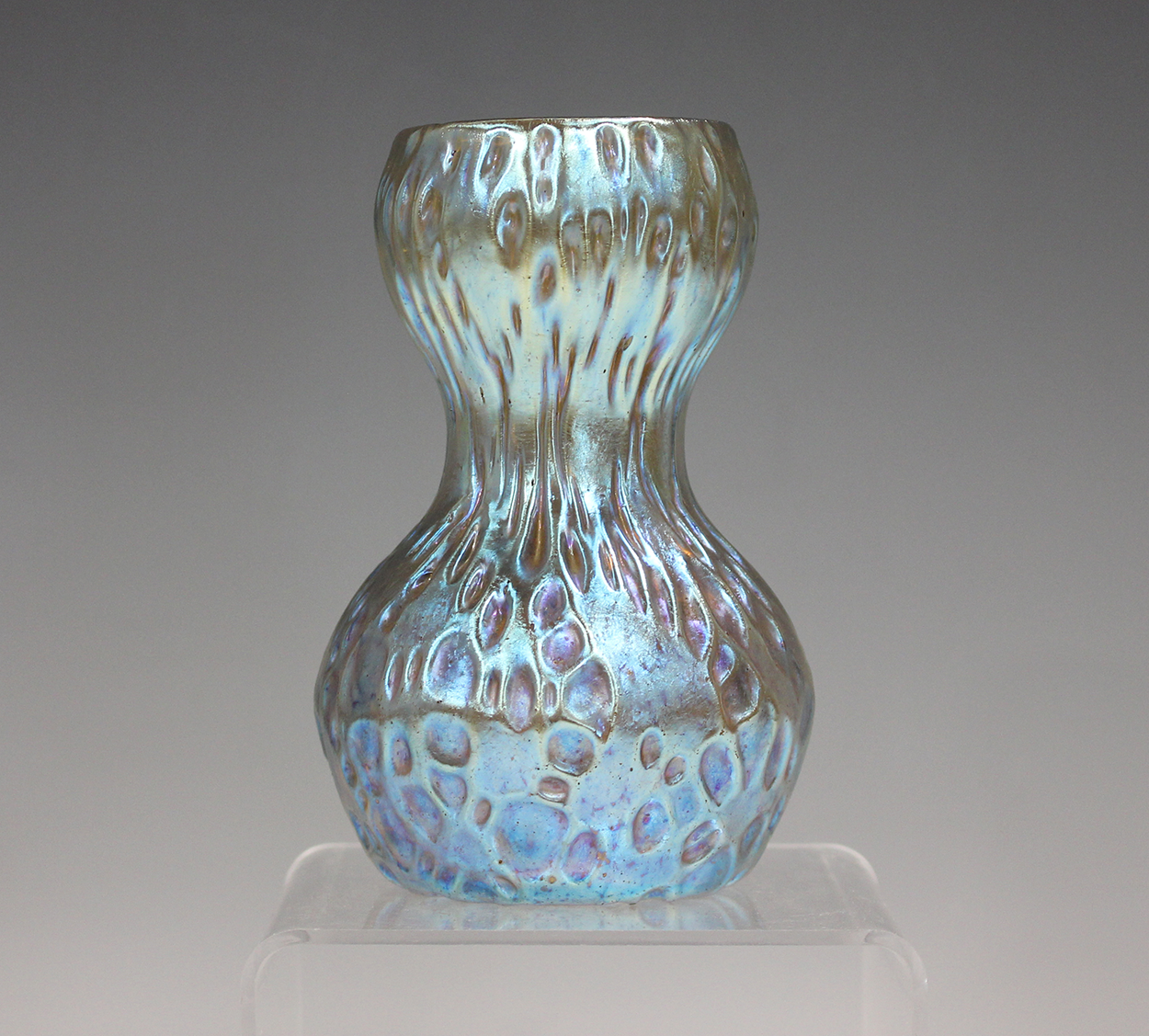
Candia Diaspora refers to the textured design on the small blue and golden Loetz iridescent glass vase. It is also part of the John and Poppy Stallebrass collection. Measuring 12.5cm it is estimated at £70-£100. It dates from around 1902 but there is something distinctly contemporary in its waisted shape, iridescence and erupted crater like surface.
Most Loetz pieces of glass are unsigned. The intensity of colour and silky surface was unmatched by any other European glass maker. In many regards Loetz is comparable with Tiffany and yet the prices for its glass, for now, remain much more accessible.
Compared to so many collectors fields glass represents exceptional value with pieces by many leading designers and makers still really affordable. Pre-sale estimates for pieces in Toovey’s 250 lot specialist glass sale on Wednesday 6th December 2023 range from £50-£1000 and the catalogue is online at www.tooveys.com.
